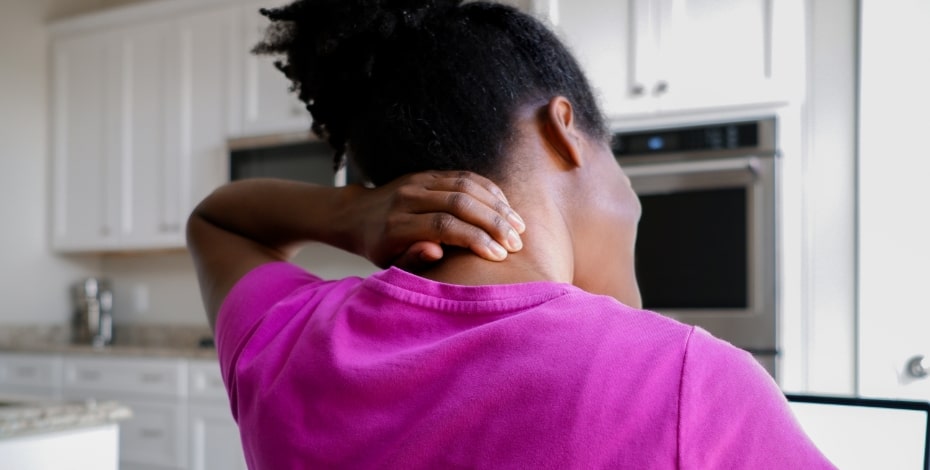
Treatments for non-specific neck pain

Worldwide, chronic non-specific neck pain is common, costly and disabling, say physiotherapy researchers Greta Castellini, Silvia Bargeri and Paolo Pillastrini.
Although neck pain has multifactorial causes, in individual cases the aetiology is generally not reliably identifiable and therefore it is classified as non-specific neck pain.
Recently, a group of Italian researchers conducted a systematic literature review of the evidence to search for all available treatments.
How much evidence did you find with your literature searches and what was the quality of the evidence like?
Overall, 119 randomised trials involving 12,496 patients were included and analysed. The risk of bias was low in just over half the trials.
On average, the certainty of evidence varied from low to very low, meaning that the effects may be different from the truth.
What approach did you use to pool the results of the studies you identified?
Network meta-analysis is a technique for comparing different interventions simultaneously in a single analysis by combining both direct and indirect evidence across a sample of studies (mixed evidence).
It produces estimates of the relative effects between any pair of interventions in the network and usually yields more precise estimates than a single direct or indirect estimate.
Estimates (mixed, direct and indirect) of all interventions can be reported against a reference standard.
Our reference standard was inert treatment (including sham therapy, placebo drugs, waiting list control and no intervention) in each outcome network.
Were some treatments or multimodal treatment approaches shown to likely be more effective than others?
Compared to inert treatment, exercise applied with Kinesio taping, acupuncture/dry needling applied with manual therapy, manual therapy applied with physical agents, exercise applied with manual therapy, exercise applied with physical agents, manual therapy and physical agents were effective for pain at one month, whereas education applied
with exercise, mind–body disciplines and physical agents were effective for pain at three to six months.
Physical agents and relaxation were effective for disability at one month, while acupuncture/dry needling, acupuncture/dry needling applied with exercise, exercise applied with manual therapy, mind–body disciplines and physical agents were effective for disability at three to six months.
Were the differences in the effects of these interventions large enough to be considered clinically important?
The clinical relevance of the effects ranged from possible to definite.
Short-term follow-up can be considered the most reliable follow-up of the treatment effects.
The network meta-analysis findings for pain at one month showed definite clinical relevance for exercise applied with Kinesio taping and probable clinical relevance for some other multimodal interventions (acupuncture/dry needling applied with manual therapy, exercise applied with manual therapy, exercise applied with physical agents, manual therapy applied with physical agents and physical agents) when compared to an inert intervention.
What about long-term outcomes?
At 12 months, no superiority in pain and disability outcomes was found between conservative interventions and inert treatment.
Were any of the more effective interventions associated with adverse events?
No serious event was reported. The majority were mild events reported mainly in relation to acupuncture/dry needling treatment (1288 events in 2353 patients randomised in 10 studies).
>> Greta Castellini and Silvia Bargeri are physiotherapist researchers working in a Clinical Epidemiology Unit of Galeazzi Orthopaedic Institute in Milan, Italy. They apply the scientific methodology of evidence-based medicine to translate research into clinical practice.
>> Paolo Pillastrini is a full professor at the University of Bologna, Italy. His research is focused on physiotherapy and rehabilitation for musculoskeletal, neurological, rheumatological and visceral disorders.
© Copyright 2024 by Australian Physiotherapy Association. All rights reserved.





